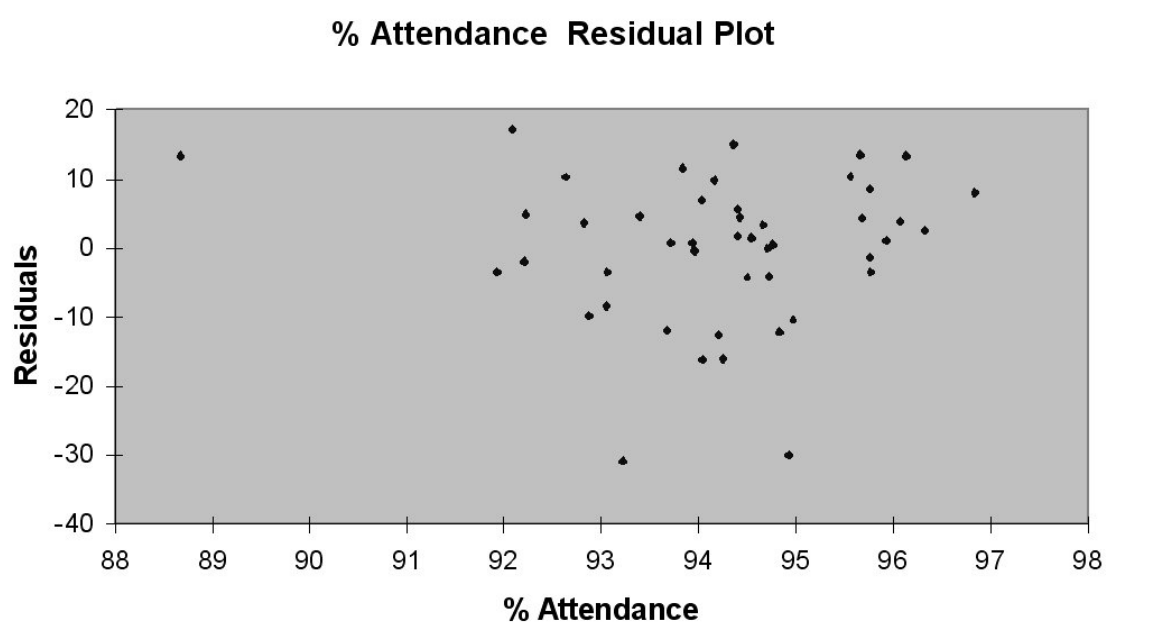TABLE 15- 8
The superintendent of a school district wanted to predict the percentage of students passing a sixth- grade proficiency test. She obtained the data on percentage of students passing the proficiency test (% Passing), daily average of the percentage of students attending class (% Attendance), average teacher salary in dollars (Salaries), and instructional spending per pupil in dollars (Spending) of 47 schools in the state.
Let Y = % Passing as the dependent variable, X1 = % Attendance, X2 = Salaries and X3 = Spending.
The coefficient of multiple determination (R 2 j) of each of the 3 predictors with all the other remaining predictors are,
respectively, 0.0338, 0.4669, and 0.4743.
The output from the best- subset regressions is given below:
Adjusted
Following is the residual plot for % Attendance:
Following is the residual plot for % Attendance:
Following is the output of several multiple regression models:
-Referring to Table 15-8, there is reason to suspect collinearity between some pairs of predictors.
Definitions:
Herbivory
The eating of plants by animals, a biological interaction essential for energy transfer in many ecosystems.
Endemic Species
Species that are found only in a specific geographical area and nowhere else in the world.
Exotic Species
Organisms introduced to new environments where they are not naturally found, often causing harm to native species and ecosystems.
Indicator Species
Organisms used to assess the health of an environment or ecosystem because their presence, abundance, or lack thereof reflects specific environmental conditions.
Q24: Referring to Table 13-4, _% of the
Q29: Referring to Table 16-15, what is the
Q32: Referring to Table 14-13, predict the meter
Q47: Referring to Table 16-7, the number of
Q66: Referring to Table 14-16, there is sufficient
Q66: Which of the following situations suggests a
Q77: Referring to Table 13-12, the error sum
Q84: Referring to Table 16-6, exponential smoothing with
Q158: Referring to Table 14-4, suppose the builder
Q178: Referring to Table 12-12, if there is